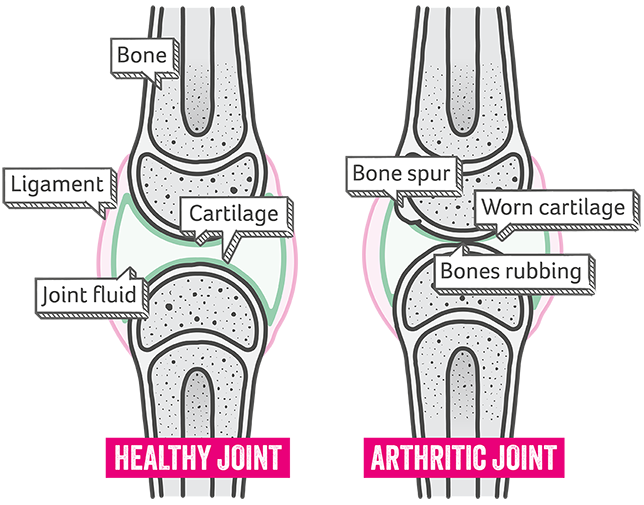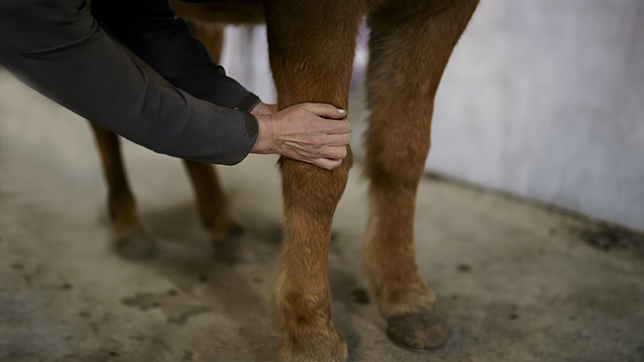16th August 2024
Arthritis in horses
Advert: August 2024
Arthritis is a word no horse owner wants to hear. Since they’re our pride and joy, we want our horses to be happy and healthy throughout their lives – yet arthritis seems like an inescapable ailment as our horses age.
If you suffer from arthritis yourself, it’s likely you’re already aware it is a painful condition that only worsens if left untreated. So, we’re empowering you, as a horse owner and/or rider, to understand arthritis and be able to help the horses in your life if ever they suffer from it.
Read on, to discover what arthritis is, the causes of arthritis in horses, signs of arthritis, and ways to care for horses who have arthritis…
Remember: Check out our equestrian glossary if you notice terms, phrases, or words that are unfamiliar!
- Take me to: What is arthritis?
- Take me to: What causes arthritis in horses
- Take me to: Signs of arthritis in horses
- Take me to: How is arthritis diagnosed in horses?
- Take me to: Treatment for arthritis in horses
- Take me to: Helping horses with arthritis
What is arthritis?
When joints are damaged and worn, they can become arthritic. But, to understand arthritis, it’s essential to know how a healthy joint works.
A healthy joint contains rubber-like tissue, called cartilage, that covers the ends of each bone within a joint, which allows for cushioning and smooth movement. Healthy joint cartilage goes through a continuous cycle of breakdown and repair – while being lubricated and nourished by joint fluid – to enable your horse to move freely without pain.
As joint fluid becomes thinner and cartilage is worn away, there’s no longer cushioning within a joint, meaning it can’t glide smoothly anymore. Without protective cartilage and healthy joint fluid, the ends of bones within joints can connect as your horse moves – which, sadly, leads to pain and inflammation.

Myth-busting: Although it’s more common in older horses, due to the natural wear and tear of joints over time, horses of any age can develop arthritis.
What causes arthritis in horses?
There are several types of arthritis in horses that may be caused by a wide range of underlying factors, including:
- Osteoarthritis – a.k.a. degenerative joint disease (DJD), resulting from continuous wear and tear, this form of arthritis can cause growths called ‘spurs’ to form and change the appearance and shape of joints.
- Neck arthritis – osteoarthritis that develops between the vertebrae of a horse’s neck is usually linked to nerve damage and can impact muscle use.
- Traumatic arthritis – whether caused by a joint injury or osteoarthritis, traumatic arthritis can lead to considerable pain as cartilage wears away and bones rub against one another within a joint.
- Secondary arthritis – could arise due to disruption of a joint capsule (where cartilage is located), following an injury or infection; for example, a joint fracture or puncture wound to a joint.
- Infectious arthritis – creates uneven joint surfaces caused by an infection within a joint; usually the result of injury, surgery, or injection into a joint.
- Bone spavin – osteoarthritis of the hock joint is believed to be the result of repeated rotation and compression of small bones within the hock.
- Ringbone – ‘high ringbone’, in the pastern joint (above the hoof), and ‘low ringbone’, in the coffin joint (within the hoof), are thought to have many causes, e.g. conformation and workload.
Plus, while they are rarely the cause of arthritis, a bone cyst might lead to the development of osteoarthritis because it disrupts healthy joint movement.
Despite a widely held belief that severity of arthritis increases as temperatures drop, and weather gets colder, our 2023 claims data suggests arthritis claims don’t just peak in winter months. So, if you notice symptoms of arthritis at any time of the year, it’s vital to book an appointment with an equine vet to get your horse checked.

Signs of arthritis in horses
Each horse’s experience of arthritis is unique to them, because every horse is an individual whose reaction to pain will differ to another’s. So, it’s important to note that horses may or may not show the following symptoms if they have arthritis:
- Lameness.
- Swelling around a joint.
- Heat surrounding a joint.
- Sitffness (i.e. unable to move smoothly).
- Decreased range of motion.
- Reduced performance.
- Muscle loss.
- Difficulty grazing.
- Lack of energy.
- Visible changes to the joint.
Horses who suffer from arthritis tend to experience pain or tenderness, which can be conveyed in a variety of ways, for example:
- Ears back.
- Visibly tense.
- Reluctance to exercise.
- Refusal to pick up legs.
- Behavioural changes.
Please contact an equine vet straight away if you’re concerned your horse might have arthritis, or you think your horse is experiencing pain of any description.
How is arthritis diagnosed in horses?
The sooner your horse is diagnosed with arthritis, the greater the chances your vet can support them to feel better.
Here are some of the most common methods for diagnosing arthritis in horses:
Flexion tests
A vet will flex the joint for up to a minute before your horse is trotted away and their comfort levels are assessed.
Nerve blocks
To determine whether a specific joint is causing discomfort, a vet might inject local anaesthetic into the nerves surrounding a joint to remove pain. Then, your horse’s movement will be monitored, to work out if their lameness has improved – offering an indication of the problematic joint.
Imaging tests
Tests such as x-rays, ultrasound scans, and MRIs could be performed to confirm whether or not your horse has arthritis.
Treatment for arthritis in horses
Unfortunately, there isn’t yet a cure for arthritis. However, thankfully, there are treatments available to help your horse feel more comfortable if they have arthritis, so they can enjoy their life to the full.
Please discuss treatment options with an equine vet before treating your horse for arthritis.
Pain relief and/or anti-inflammatory medication
Alongside changes to your horse’s diet, workload, and turnout routine, a vet may recommend putting your horse on pain relief and/or anti-inflammatory medication, e.g. Bute or Danilon.
It’s important to note that long-term use of pain relief and/or anti-inflammatory medication, like Bute or Danilon, has been known to result in side effects such as stomach ulcers.
Injections
Sometimes, equine vets opt to use medicated or steroid injections to reduce the pain and inflammation in an arthritic joint.
Surgery
In extreme cases of arthritis, a vet may decide to perform surgery to improve your horse’s quality of life. For example, an arthrodesis (fusing joints to eliminate movement in them) is a last resort for relieving arthritic pain in low-motion joints.
Helping horses with arthritis
Vets may recommend several strategies for managing the day-to-day care of a horse with arthritis, including:
- Joint supplements* – it’s thought that adding vet-approved, joint-friendly, nutritional supplements (e.g. the herb Boswellia) to a horse’s feed might relieve some symptoms of arthritis. Please consult your vet before adding any supplements to your horse's diet.
- Corrective shoeing and regular hoof trims (especially if barefoot) – ensuring your horse’s hooves are properly balanced is essential when alleviating the pressure on their joints.
- Weight management – keeping your horse at a healthy weight should reduce any unnecessary joint strain.
- Increasing turnout time – encouraging gentle movement is far better for a horse’s joint health than letting them stand in their stable all day (though you can inspire movement around the stable, too!).
- Rethinking exercise routines – for example, some horses may struggle with roadwork as it could cause concussion, so they might need to stick to exercising in an arena or field, where the ground is softer.
Other methods for managing arthritis exist, like magnetic boots and massage therapy, though it’s important to discuss these options with a vet prior to choosing them for your horse.
The degenerative nature of arthritis makes it difficult to prevent. But, ensuring your horse benefits from safe exercise, the right nutrition, and proper weight management could help to lower the risks of arthritis.
*This Animal Friends webpage uses affiliate links for VioVet – meaning, if you buy something through these links, Animal Friends may earn a commission.
Looking for more horse advice?
Support and advice so that owners and riders can take the very best care of their equine.
Need horse insurance?
Horse insurance can help cover the cost of veterinary treatment if your horse gets injured or falls ill.
